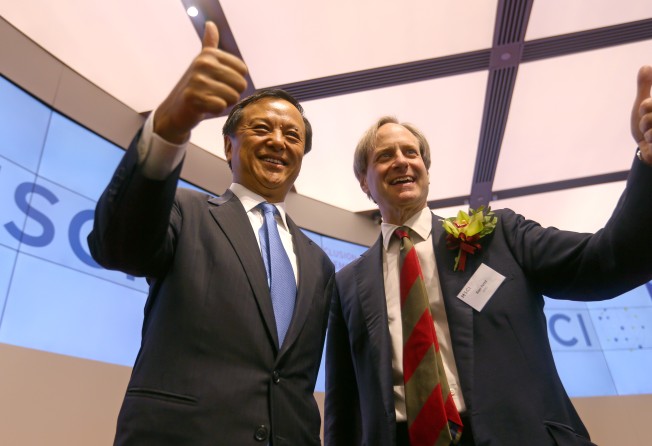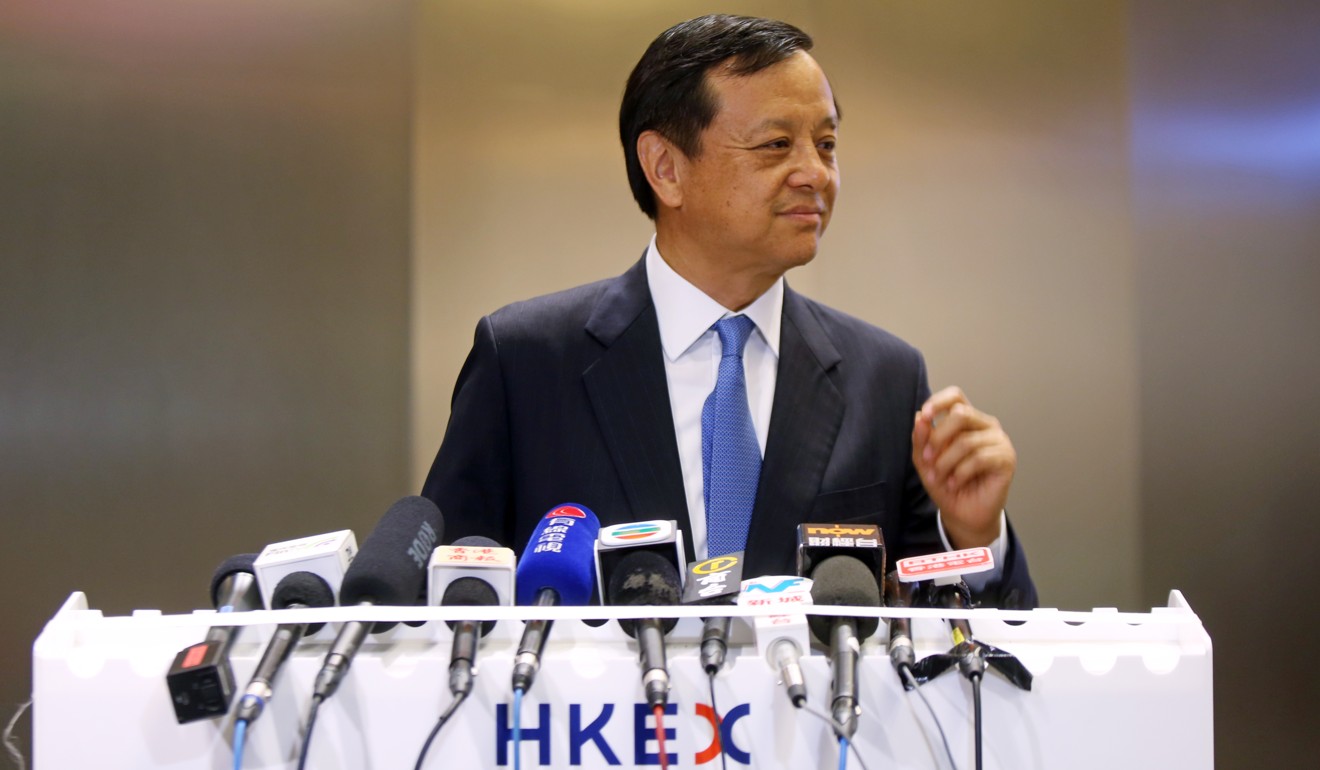
MSCI president expects more Chinese A-share inclusion plans by year end
Index compiler will continue picking eligible A shares from the Stock Connect scheme, the usage of which Baer Pettit expects ‘to increase dramatically in the years ahead’

Many more Chinese A shares could be included in MSCI’s benchmark index in future, the index compiler’s president Baer Pettit said on Thursday, in Hong Kong to kick-start the first phase of a process to include an initial 230 large-cap stocks in its MSCI Emerging Markets (EM) Index.
MSCI will add A shares, yuan-denominated Chinese stocks listed in either Shanghai or Shenzhen on Friday, to its EM Index, tracked by more than US$1.9 trillion worth of funds worldwide.
The 230 stocks will represent a rough weighting of 0.4 per cent of the index at a 2.5 per cent partial inclusion factor during the first step of the China entry on Friday.

The second phase of the entry will take place on September 3, which will increase the A shares’ inclusion factor to 5 per cent, which means they will be included based on 5 per cent of their free-float market value.
After the two-step process in June and September, those initial 230 stocks will have an aggregate weight of 0.8 per cent in the index. But Pettit underlined “the next step will come quickly, probably in the second half of this year”.
There are roughly 3,500 domestically listed A shares. Without giving any definitive timetable, Pettit also suggested a full inclusion of A shares is possible in future.
Previously, MSCI officials said further inclusion of A shares include increasing the inclusion factor and adding mid-cap stocks.
The MSCI China A Inclusion Index is heavily weighted toward financials, consumer, and real estate. The firms are predominantly blue chips such as SAIC Motor and liquor maker Kweichow Moutai.
That number had been 234 shares, but late on Wednesday, MSCI tweaked the inclusion list, dropping telecom equipment and smartphone maker ZTE, which has been buffeted by trade frictions between China and the US, and four other companies, whose shares have been suspended. Anhui Xinhua Media was added to the list.
Pettit said the next list of candidates for inclusion or change in the weightings could be made as soon as the second half of this year.
I believe it [the first A-share inclusions on Friday] will bring enormous opportunities for global investors and also lead to the flourishing of China’s capital market
He underlined the importance of the Stock Connect Initiative in MSCI’s decision-making, calling it the “enabler” to the final decision as it treats all international investors equally, as opposed to other existing investment channels that give respective investors different quotas, such as the QFII (Qualified Foreign Institutional Investor) and RQFII.
“I would be surprised if the usage of the Stock Connect programme doesn’t increase dramatically in the years ahead.”
The index compiler had rejected the inclusion of A shares three times previously, before finally giving the nod in June last year.

He added MSCI will continue picking eligible A shares from the Stock Connect, the cross-border investment channel allowing overseas investors to directly access stocks listed in either Shanghai or Shenzhen.
“We don’t know how many years it [a full inclusion] could take. But it will be a multi-step process,” said Pettit. “But the next step will come quickly, probably in the second half of this year.”
Once the index company sees what happens after the initial inclusion on June 1, it will be more confident to make decisions, he said.
He did add the caveat, however, that a number of issues will still decide the actual pace of future inclusions, highlighting prolonged trading suspensions as the one which international investors are “most sensitive”.
In general, the pace of future inclusion largely depends on whether China will continue opening up its market and if it’s easy for international investors to actually “put in and take out their capital”, from the market, he said, which might include issues such as trading suspensions, liquidity levels, appropriate hedging tools, and further loosening restrictions on the creation of index-linked investment vehicles.
Pettit called the first June 1 inclusion as a “small, but important” step, which could trigger a rebalancing of global capital flows in coming years.
“I believe it will bring enormous opportunities for global investors and also lead to the flourishing of China’s capital market.”
“Today is an inflection point in this virtuous cycle. The more international investors participate, the more they see it (investing in A shares) works and gain positive experience from it, and the more they will invest.”
Charles Li Xiaojia, chief executive for Hong Kong Exchanges & Clearing (HKEX), which runs the city’s stock exchange, said at the MSCI inclusion ceremony he expected trading volumes in the Stock Connect programme to increase sharply, adding the bourse is well prepared for such a scenario in terms of clearing and settlement arrangements.

He also said HKEX is in talks with its mainland Chinese counterparts and regulators for possible launch of A-share derivatives in the global market, as the Chinese market opens up further.
Ross Teverson, a London-based fund manager at Jupiter Asset Management, expected the weighting of total Chinese equities in MSCI EM Index could eventually rise to above 40 per cent over time, with a higher inclusion factor.
“A gradual increase in the inclusion factor for A shares will lead to greater interest in the asset class,” he said.
But the “relative ease and frequency” of share suspensions in the A-share market still remain a concern for foreign investors, he added.
In a research report earlier this month, Credit Suisse analysts estimated an initial fund inflow of US$22 billion due to the inclusion.
CSOP Asset Management, the world’s biggest RQFII asset manager, expected earlier this month an initial inflow of US$20 billion to Chinese stocks after the MSCI inclusion and up to US$400 billion of inflows in the next 10 years.